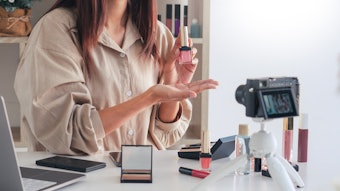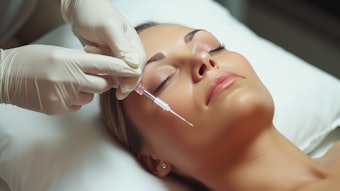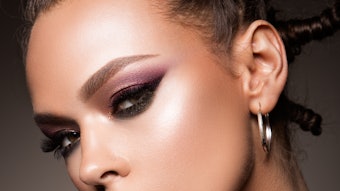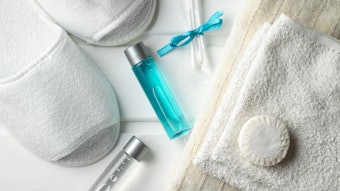
In the past five years since the beginning of the economic recession, looking to the future has been difficult due to the amount of focus skin care professionals had to place on the present. In 2013, the industry enjoyed a slow-but-steady improvement, allowing many skin care professionals to get a break from survival mode and start thinking about growth. Proof of this improvement was seen in the International SPA Association’s (ISPA) 2013 U.S. Spa Industry Study conducted by PricewaterhouseCoopers, which presented data evidencing an increase in total revenue, spa visits, revenue per visit, total number of employees and total number of spa locations over the previous year.
According to ISPA, the upward momentum of the spa industry has positively impacted the overall United States economy. In addition to generating $14 billion in revenue in 2012, the industry employs more than 343,000 individuals in the United States. The total number of spa visits increased to 160 million and the average client spent $87 per visit.
As skin care professionals start to look toward a brighter future, they need to find their place in the ever-changing world of skin care and beauty, which is not the exclusive, behind-the-doors-of-a-treatment-room experience that it used to be. Skin care is changing, as are prestige and mass market skin care formulations and availability. The line between professional and consumer brands is not the stark black-and-white that it once was and skin care professionals need to find ways to stand out from the crowd in order to ensure that their businesses and careers stay lucrative. Following are the top 10 trends shaping the current state of the spa industry. Also, don’t miss Suppliers Speak: Top Trends of 2014 on Page 38! Are one or more of these the key to your future growth and success?
1. Anti-aging: Younger and younger
Age-prevention is not just for baby boomers anymore. More and more people in their 20s and 30s are beginning to understand that great skin care can never start too early. Larissa Jensen, director and beauty industry analyst with The NPD Group, a leading market information research company, recently wrote the blog post “Don’t Smile, It Ages You,” sharing her perspective on how aging can affect the perception of beauty, and how this perception shift is occurring younger than ever.
According to Jensen, “Gen Y, or women age 25–34 years old, are a key age demographic in the world of anti-aging skin care. Thirty-nine percent of the Gen Y demographic considers anti-aging benefits to be important, a significant leap from the 19% of 18–24 year olds who agree. And this demographic is low-hanging fruit. She is new to the world of anti-aging and not yet jaded by the sometimes over-promises of many anti-aging creams. Only 33% of Gen Y skin care consumers agree that they ‘find many anti-aging products to be ineffective,’ compared to the 44% or more of women over 35 who agree with that statement.”
Reach out to the “low-hanging fruit” client now to win over a loyal client for life!
2. Business is back
With the improvement of the economy in general and the spa industry specifically, those skin care professionals who have survived the Great Recession learned a few lessons along the way ... namely, you can’t run a business without knowing about business. These days, crossing your fingers and hoping everything will work out just doesn’t cut it. The Business Summit during the Advanced Education Conference Program at both Face & Body® Northern California and Face & Body® Midwest in 2013 were standing room-only, filled with skin care professionals eager to learn from dynamic spa business experts who spoke on topics ranging from finance and marketing, to retail and social media. Although it may not be a skin care professional’s first love, it is becoming clear that, without a business brain, success is impossible. As Eleanor Roosevelt said: “You gain strength, courage and confidence by every experience in which you really stop to look fear in the face. You must do the thing you think you cannot do.”
3. Nonsurgical face lifts
Ever since the emergence of Botox as an alternative to the surgical face lift, consumers have been looking for ways to avoid going under the knife. Skin care product and equipment companies are doing their best to offer alternatives to invasive surgical treatments by combining topicals and machines to bring about anti-aging results. Examples of the techniques that encompass this type of offering are the combination of ingredients, such as hyaluronic acid, collagen and peptides, with multifunctional equipment; as well as probably the most talked-about method today: microneedling. Although not within the scope of practice for estheticians in some states (Editor’s note: Log on to www.SkinInc.com/education/statelicensing to access complete contact information for your state board.), the premise of microneedling is to create a controlled wound response in the skin to stimulate growth factors without abrading the epidermis. Microneedling is most commonly used for fine lines, wrinkles, acne scarring, pigmentation, stretch marks and even mild forms of noninflamed rosacea. What options are you offering the results-seeking clients in your spa?
4. Diet and skin
Now more than ever, consumers are beginning to understand that skin health isn’t limited to the topicals they apply to their skin. Along with genetics, or intrinsic aging, clients are learning more about extrinsic aging—the accumulation of external influences, such as sun damage, food selection, stress, sleep, and health and lifestyle choices. And because they are becoming more savvy about this, skin care professionals need to know their stuff, too, as well as be able to recommend solutions for heading off extrinsic aging. Whether this means learning more about the subjects of sleep, stress, diet and fitness yourself, or being able to recommend a professional who can speak to these issues, it is more important than ever to be educated about all types of aging and act as a mentor to your clients who are seeking solutions. Do you have a nutritionist, a sleep expert or a personal trainer that you can readily recommend to your clients or tap to speak at in-spa events? If not, make it a point to make some new friends ... ones you and your clients can trust.
5. Organic and natural
Although organic and natural products aren’t new, they are becoming more legitimate. In the past and still today, almost any personal care product can claim organic ingredients without having to legally go through any certification process. Although many companies have participated in certification of their own accord to add credibility in the confusing and diluted world of naturals labeling, rising concerns for health safety, increasing green consciousness and growing consumer awareness are fueling the demand for genuine organic personal care products, according to a new study by Transparency Market Research. In fact, the United States’ closest option for organic labeling is the United States Department of Agriculture (USDA) Certified Organic label, which actually is for food and not personal care products. As the demand for organic personal care products grows, so too will the demand for legitimacy in growing practices and certification.
Even organic and natural spas are getting in on consumers’ growing appetite for naturals, so much so that Ecocert, a worldwide certification body specializing in the environment, recently launched an international standard specially designed for organic and natural spas. By integrating the Being certification program, spa owners can have access to the Ecocert network of the spa industry, as well as receive immediate visibility among consumers and professionals. Talk about taking your green goals to the next level!
6. Men
Although once a small niche segment of the industry, men are coming into their own when it comes to the spa. The reason for more men? Stress, according to Lynn McNees, president of ISPA, in an exclusive interview with Skin Inc. “Stress does not discriminate and affects both genders equally, so it is interesting that we have seen the male spa-goer population increase recently, as well. Males now make up 47% of the overall spa-goer population, and historically that number has been much lower.” Along with spa treatments, skin care and grooming products have grown significantly for men as increasing numbers of males worldwide have incorporated grooming into their routine. In fact, new research from Mintel reveals that beauty and personal care launches specifically targeted for men have increased globally by 70% during the past six years (2007–2012). If male products and services aren’t currently available at your facility, your next profitable move may involve becoming an expert in the male mentality.
7. Multicultural beauty
Demographically, African-American, Asian, Indian, Hispanic and other people of color number more than one-third the United States population with ever-increasing spending power. Clients with skin of color defy traditional marketing segment definitions and, instead, exhibit contextual cultural identity, according to a new report from Kline & Company, making it more important for spas to know their clients. For example, according to the study, approximately 50% of African-American respondents and 36% of Asians strongly agree that they take pride in taking care of their skin. Take a look at your demographic and the area in which your spa is located. What are the predominant ethnicities, and what are their needs? Provide services and products in your spa that will appeal to the largest populations in your area, in the ways they need to be received, for enhanced future success.
8. Global skin
And as more clients with skin of color come through your doors, it is crucial to remember that it is rare for a person to be decended from one or two distinct cultural heritages. Instead, more and more clients have a variety of cultural influences in their genetic makeup, and this presents a new and interesting challenge for skin care professionals. As stated by author Michelle Goldsmith, an educator for PCA Skin, in the article “Global Skin: Climbing Your Client’s Family Tree” from the August 2013 issue of Skin Inc., “Because numerous people are of mixed hereditary backgrounds and many color their hair, wear colored contacts and may tan, either via topical products or UV exposure, it is increasingly difficult to determine a client’s heritage based solely on appearance ... It is imperative that skin care professionals understand how the skin functions in those with mixed ancestry. For example, a person who visually appears to be a Fitzpatrick I or II may indeed have a parent or other relative who is a Fitzpatrick IV, V or VI. It would be risky to create a treatment plan for this client based solely on the color of their skin. Therefore, obtaining a thorough history and profile is important for every client. You wouldn’t want to treat this client with ingredients or percentages that are too active. Ask the appropriate questions and never make assumptions based on appearances. A great starting question is: ‘What is your hereditary background based on your parents, grandparents and others?’” By training your team to approach starting consultations in this manner, you will best be able to address clients’ concerns safely and thoroughly.
9. Online engagement
Let’s face it: Facebook isn’t going anywhere. In fact, Facebook—and its social media cohorts—are the future of your business. Don’t believe me? Before you know it, a new, mobile savvy clientele will be making up the majority of your client list ... especially if you are marketing to younger clients. If you see social media as just a tool for last-minute discounts, you aren’t considering the bigger picture. According to Ashley Ludgood, digital and social media director for IF Marketing and author of the article “Online Dating: Build Relationships and Stimulate Client Engagement Via Social Media” from the October 2013 issue of Skin Inc., it’s the relationship aspect of social media that will prove valuable. “In light of the growing importance of an online presence, relationships contribute to your earnings, generating leads before you’ve even met potential clients. Social media has become a way of developing ‘pre-lationships.’ People have the opportunity to connect and feel comfortable with you before ever stepping foot through your door,” says Ludgood. Try looking at social media from this new perspective, and you’ll be amazed at how important it will suddenly become.
10. Time-starved clients
From multifunctional products to express treatments, the writing is on the wall: The majority of clients don’t have time for the traditional spa experience. Sure, many clients still do, but if you are not catering to a busy, working, stressed-out clientele, you are missing out on stable, loyal, profitable relationships. The corporate world is more cutthroat than ever, which means that those surviving in it need to be more healthy and beautiful than ever. By bending over backward for these overtaxed and often wealthy clients, you can ensure that you will have a place on their calenders regularly. They appreciate your attention to detail (smartphone charging stations?); your personalized focus on their needs (facial and pedi at the same time?); and your regard for their time-sensitivity (express treatments and automatic rebooking?). By making yourself available to this rushed group, you will soon be indispensable.










